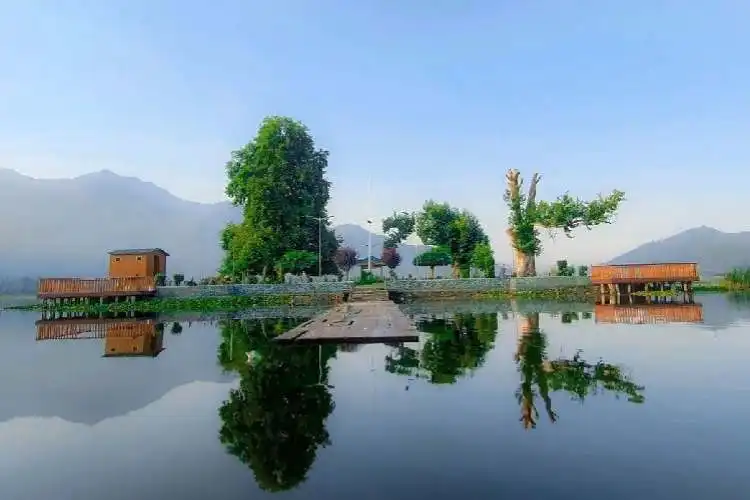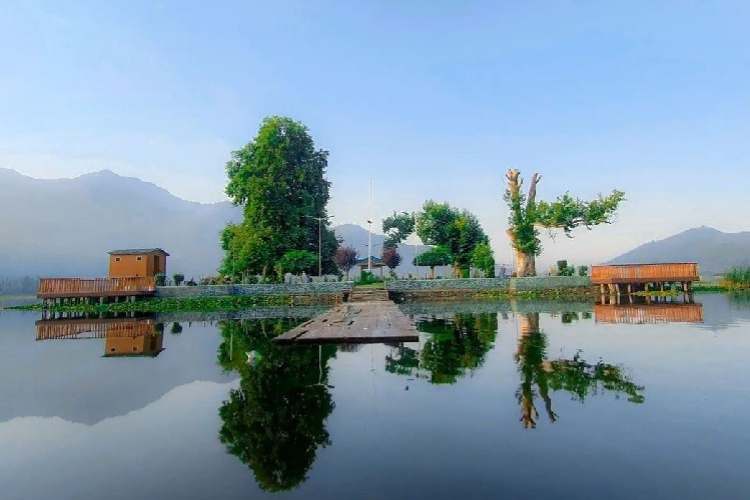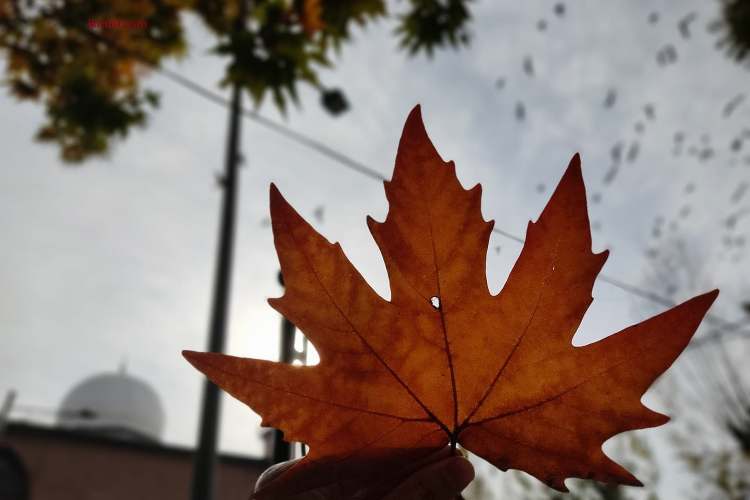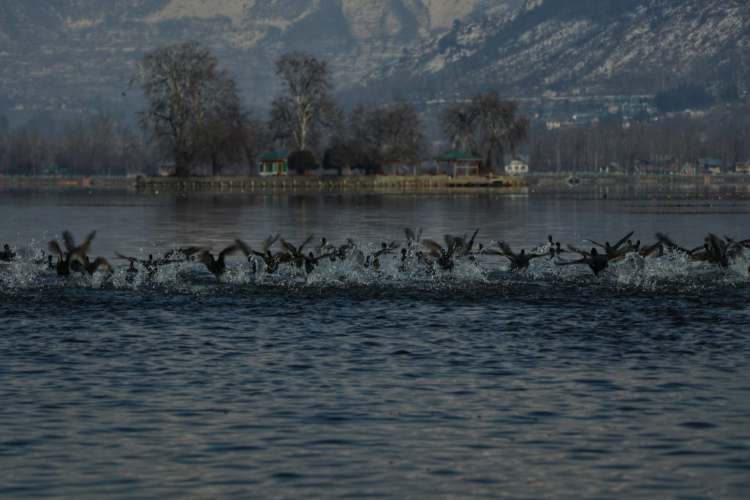
Mohammad Hanief/ Srinagar
Farooq Ahmad, a resident of downtown Srinagar is fond of old Bollywood songs. He sees the scenic beauty of Kashmir valley through songs of movies featuring Bollywood stars like Shammi Kapoor, Asha Parikh, Shashi Kapoor, Rajindra Kumar, Rishi Kapoor, Dimple Kapadia, Rajesh Khanna and Amitabh Bachchan, etc.
Farooq aim of watching old songs is to see the beauty of Kashmir valley especially the Dal Lake, Char Chinari, Gulmarg and Pahalgam, before rapid urbanisation. He spends most of his free time watching these on his latest smartphone using 4-G technology.
Many song sequence of Bollywood stars in the 1970s, 80s and 90s were shot in the Dal Lake - some specifically at the island park inside called Char Chinari (islands), named after four Chinar trees that were growing tall in the middle of the Lake. Char Chinari can be reached only through ‘Shikara.’
Dal Lake is integral to tourism and recreation in Kashmir. It's also a source of commerical activities as people live inside the lake, row boarts for tourists and grow vegetables on the artificially created islands inside it.
Dal Lake also yields warer plants like singhara (water chestnuts) and lotus stems (Nadru).
The shoreline of the lake is about 15.5 kilometres (9.6 mi), is encompassed by a boulevard lined with Mughal era gardens, parks, houseboats and hotels. Scenic views of the lake can be witnessed from the shoreline Mughal gardens, such as Shalimar Bagh and Nishat Bagh built during the reign of Mughal Emperor Jahangir and from houseboats cruising along the lake in the colourful shikaras. During the winter season, the temperature sometimes reaches −11 °C (12 °F), freezing the lake.
 Many Bollywood songs have been filmed on this scenic island
Many Bollywood songs have been filmed on this scenic island
The lake covers an area of 18 square kilometres (6.9 sq mi) and is part of a natural wetland which covers 21.1 square kilometres (8.1 sq mi), including its floating gardens. The floating gardens, known as “Raad” in Kashmiri, blossom with lotus flowers during July and August.
The wetland is divided by causeways into four basins; Gagribal, Lokut Dal, Bod Dal and Nagin (although Nagin is also considered as an independent lake). Lokut-dal and Bod-dal each have an island in the centre, known as Rup Lank (or Char Chinari) and Sona Lank respectively. The houseboats are closely associated with Dal Lake which provide accommodation to tourists in Srinagar.
The famous Dal Lake of Srinagar city includes 3 islands, 2 of which are marked with beautiful Chinar trees located in Bod Dal and Lokut Dal and known as Rupa Lank (Silver Island) and Sona Lanka (Gold Island). It is marked with the presence of majestic Chinar trees at the four corners, thus known as Char-Chinari (Four Chinars).
The Char Chinari Island gardens came into limelight in 1970 with the movie song of ‘Achha To Hum Chalte Hain’ of ‘Aan Milo Sajna’ movie of 1970 filmed on Rajesh Khanna and Asha Parekh.
The Char Chinar used to be a hub of tourists for its serenity and the aesthetics as four gigantic chinars stood on the four corners of the small island amid the vastness of the pristine lake.
.jpg) Char Chinar is very popular with tourists who visit the Dal Lake
Char Chinar is very popular with tourists who visit the Dal Lake
Murad Baksh, brother of the Mughal emperor Aurangzeb, constructed the Rupa Lank. The second Chinar Island, known as Sona Lanka (Gold Island), is located on the Lokut Dal, and overlooks the holy shrine of Hazratbal.
Sona Lank “golden isle at the south end in the third portion of the lake was raised by Sultan Zain-ul-Abidin in 1421 AD for the shelter of the boatmen in Bod Dal (Big Dal). He built a three-storeyed house on the island which was destroyed by the earthquake.
Emperor Jahangir also built a cottage there, which also got vanished. It was rebuilt by Afghan governor Amir Khan Jawansher (1770-76). Nehru Park is an island just a few yards away from the roadside near Shankaracharya hill.
Chinar trees characteristically grow in Eastern Himalayas. They have been an important part of Kashmiri tradition, in that, a Chinar tree is found in almost every village in Kashmir. These trees have survived for ages, because Chinar is basically a long-living tree. It spreads wide across a region of cool climate with sufficient water. The tree has several properties - leaves and bark are used as medicine. The wood, known as lace wood has been used for delicate furniture and the twigs and roots are used for making dyes.
Chinar Leaf is a symbol of Kashmir. Chinar leaf is very beautiful which is green in summer season and in Autumn the color changes to Blood Red, Amber, and Yellow.

Chinar leaf
Chinar trees can be found almost in every corner of valley, hills, planes, cities, villages and parks.
Due to these reasons, they are widely preferred in gardens. They even have many medicinal properties. If you are looking to escape the hustle and bustle of the city then this is the perfect place for you to take a break!
Char chinar island in the middle of the second portion of the Dal Lake has been a favorite place of emperors and empresses and later it attracted famous foreign writers/visitors like Bernier, Forster, Moorcroft, Vigne, and many other travelers.
Over the years the size of the lake has shrunk to a large extent. Due to environmental changes and population growth. Protection measures to save the Dal Lake from further hazards has been the prime concern of the authorities and people connected with the tourism industry in particular.
During the winter season, migratory birds float in the lake making it a magnificent scene.
 Migratory birds on Dal Lake with the Char Chinar in the background
Migratory birds on Dal Lake with the Char Chinar in the background
The Dal Lake offers splendid colours and moods with every change in the weather that mesmerizes the visitors offering the ultimate shot to a photographer.
In February, 2022, Jammu and Kashmir Forest Department has successfully completed the transplanting operation of two tall Chinars at the famous Char Chinar in Dal Lake and restored its glory and it was marked as first-of-its-kind replanting operation in the country.
The replanting of Chinas was the idea of Lt Governor Manoj Sinha. The Forest Department, Floriculture Department, LCMA (Lake Conservation of Management Authoruity) and Scientists of SKUAST (Sher-e-Kashmir Agricultural University) and JKFRI were involved in the operation.
The unique operation was executed on February 19, 2022 and completed on the unique date 22-02-2022 when the two Chinars were finally planted, braving rain and snow on the day.
Earlier, the 2014 floods left two mighty chinars damaged, denting its iconic view from the boulevard around the lake. The island, in fact, owes its name to Chinar trees, as Char Chinari means four Chinars.
ALSO READ: Kashmiri's tryst with Persian Sufi Dastgir sahib continues
The garden lines with four chinars used to be the favourite place for tourists during summer.. Tourists and locals enjoy their trips through Shikaras to both the islands of Dal Lake.
